Stretched shoulders, lost shapes, and moth bites are the sworn enemies of a cozy knit collection. By mixing expert organizing tactics with pest-proofing know-how, you can treat every sweater—from chunky Icelandic pulls to delicate cashmere cardis—like a treasured investment. The 20 ideas below range from quick, renter-friendly tweaks to full-scale closet upgrades, each framed as a complete “theme” you can replicate at home. Fold where weight matters, hang only with support, label everything, and—above all—keep the fibers clean and dry before you store. Ready to conquer the chaos? Let’s dive in.
1. Color-Coded Open Shelf Sweater Stack
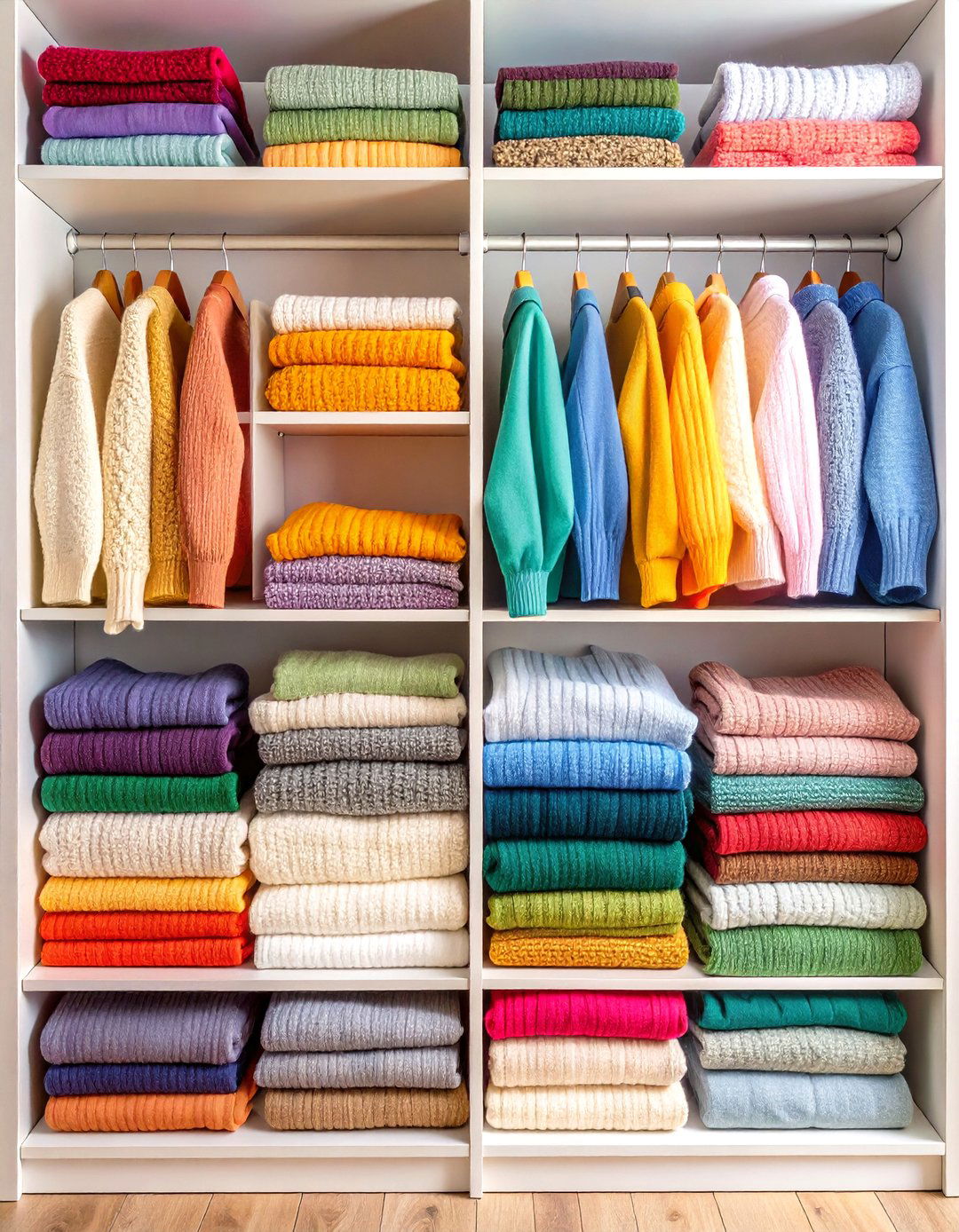
A boutique-style wall of shelves lets you fold sweaters flat, sort them by hue or pattern, and stack no higher than 30 cm so piles don’t topple. Shelf dividers slip between stacks to stop slippage, while a quick rainbow order turns storage into décor. Add a sachet of cedar or lavender at the back of each shelf for pest control and a fresh scent. This method shines in reach-in closets where vertical real estate is plentiful yet drawer space is scarce.
Deep dresser drawers become mini card catalogs when you file-fold knits the KonMari way—fold into thirds, stand them upright, and slip a slim divider every 6 cm to prevent toppling. The “book spine” view means one glance shows every option, and nothing buries at the bottom. Stash a cedar ball in each quadrant to deter moths, and leave a finger’s width gap at the back for airflow. This strategy is ideal for fine-gauge merino or cashmere that could stretch on hangers.
Soft-sided storage cubes—either hanging from a rod or slotted into a shelving unit—create breathable, dust-free pockets for mid-weight knits. Each cubby fits two to three folds, enforcing portion control and warding off the “leaning tower” effect. Choose cubes with a clear front window so you spot what’s inside without tugging the stack apart, and tuck a lavender sachet in the back panel for scent and pest control. The modular nature lets you remove a cube for seasonal rotation without dismantling your whole closet.
Slide low-profile bins beneath the bed, lining the interior with cedar planks or sachets to repel moths and absorb mustiness. Sweaters rest folded inside cotton pillowcases (never plastic alone) to allow ventilation while keeping lint in check. Clear lids reveal contents instantly, and labeling the bin end with the knit types (“chunky wool,” “cashmere”) saves future digging. Because temperatures near the floor can fluctuate, choose bins with a tight gasket to block humidity spikes.
When space is tight, zip thick Nordic pullovers into heavy-duty vacuum bags and draw out the air to shrink volume by up to 70 percent. Always launder knits first—body oils attract moths—and slip a silica packet inside to fight moisture. Store the compressed bundles on a top shelf or in an attic trunk, then “reinflate” next winter with fibers still pristine. Airtight seals also guard against basement dampness and pests that chew through flimsy fabric totes.
Turn unused rod length into vertical real estate with a fabric hanging organizer. Each tier takes one neatly folded sweater, so you see styles in a single sweep and avoid over-stacking. Look for reinforced shelves that resist bowing and a Velcro strap rated for at least 15 kg. For extra polish, match cubby edges to your closet color scheme and slide an anti-humidity cedar sheet beneath the bottom tier.
7. Over-the-Door Clear Pocket Knit Keeper
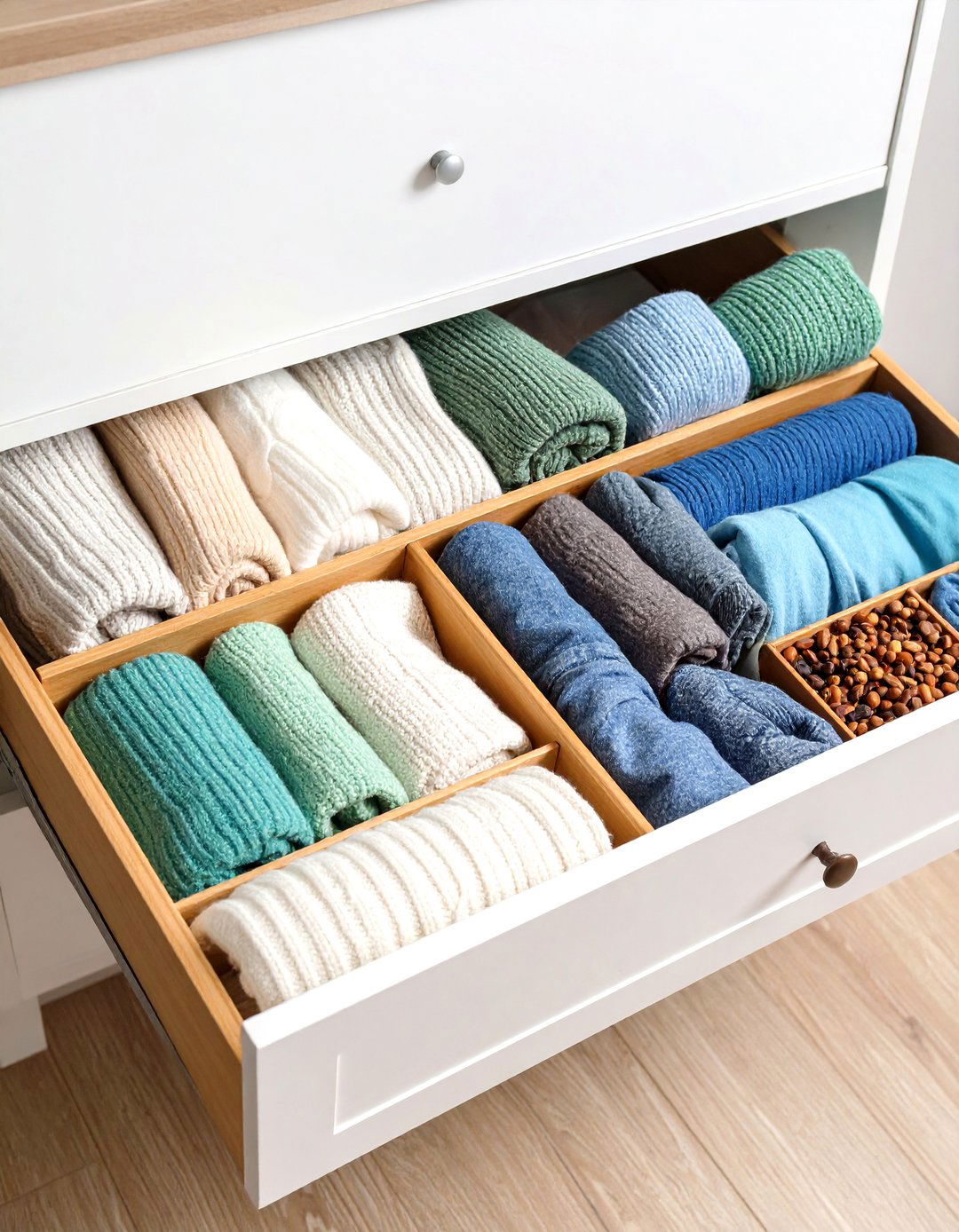
An over-the-door shoe organizer isn’t just for sneakers—its transparent pockets cradle lightweight cardigans, summer linen knits, or toddler sweaters while freeing shelf space. Position heavier pieces low to keep doors balanced, and dedicate a top row to cedar pouches or lint rollers. Because pockets breathe, sweaters stay fresher than in plastic bins, and you reclaim a hidden vertical plane that renters can install without tools.
8. Rolling Cart with Breathable Baskets
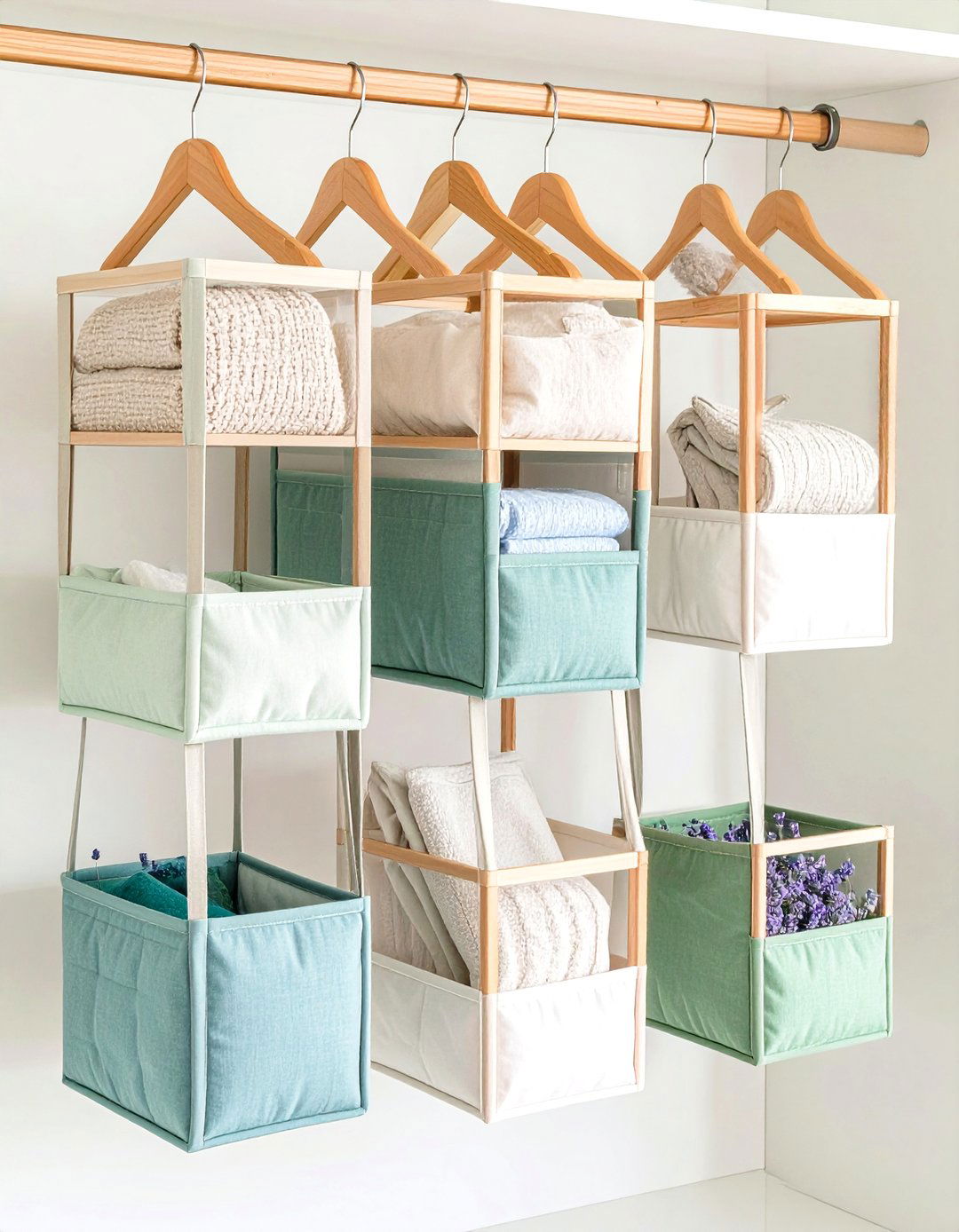
A three-tier metal cart on casters transforms any corner into a mobile “sweater bar.” Woven baskets drop into each shelf, allowing airflow while corralling folds. Wheel the cart beside the bed for quick outfit assembly, then roll it back to a closet nook. A weekly 15-minute “reset” keeps piles tidy—simply smooth folds, return strays, and spritz cedar spray on liners.
Repurpose a hard-sided vintage suitcase as a charming off-season archive. After cleaning and airing the case, line it with acid-free tissue, stack folded sweaters, and slip cedar sachets at corners. The sturdy shell shields fibers from basement dust, yet its retro look lets you display it atop an armoire. Label a luggage tag with the storage season to ensure timely rotation each year.
Upgrade a closet system with slide-out wire baskets that act like drawers but ventilate bulky cable knits. The grid bottom prevents snagging while letting light and air circulate, keeping wool fresh. Because baskets glide fully, you reach the very back without disturbing front stacks. Pair with clip-on chalkboard tags for at-a-glance inventory and adjust heights as your collection grows.
11. Sliding Mesh Racks for Bulky Knits
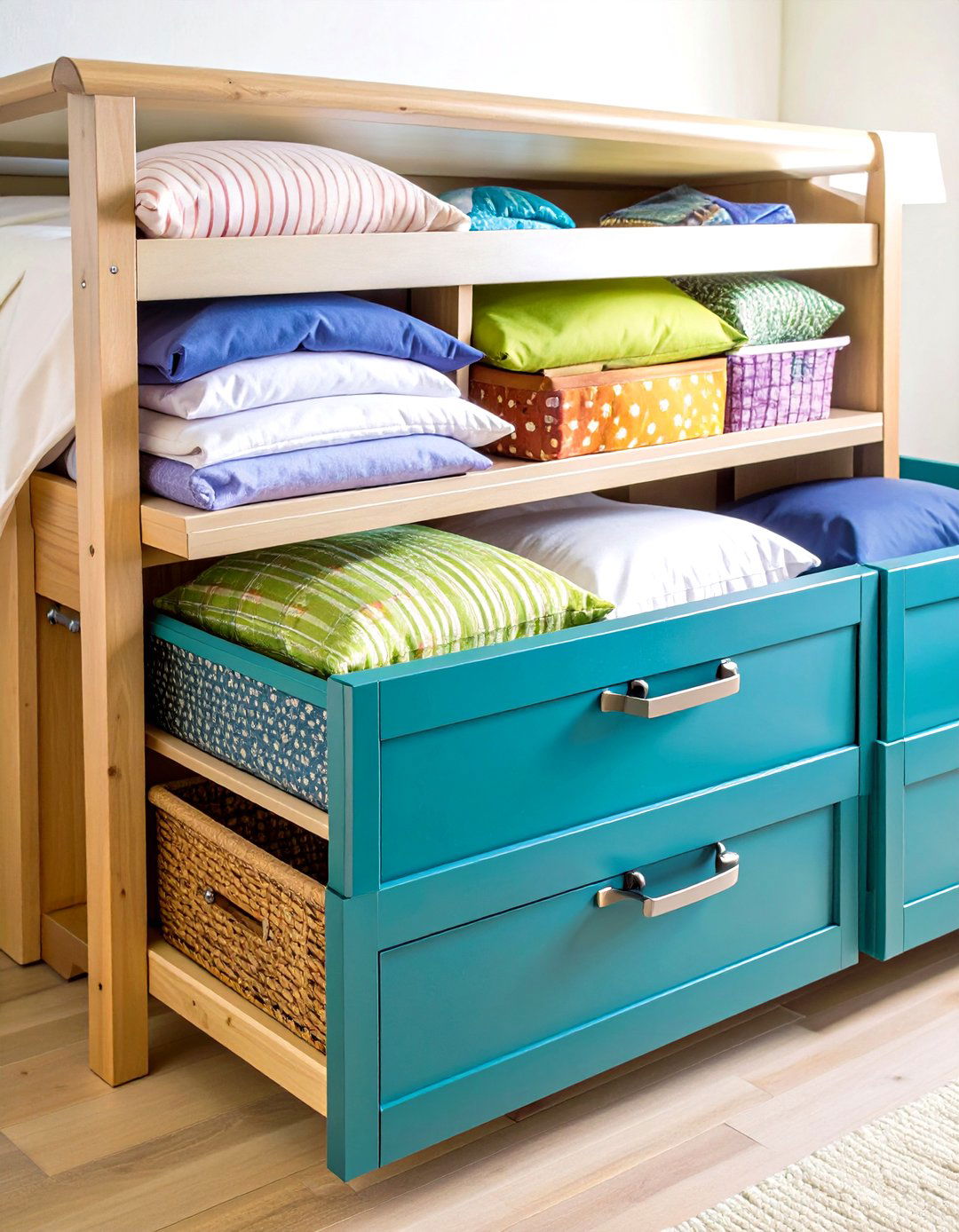
Install telescoping mesh shelves that pull forward like a drawer, ideal for heavyweight fisherman knits that crush lighter pieces. Mesh provides airflow and prevents moth-friendly darkness, while a low lip stops folds from slipping. Add a battery-powered LED strip under the shelf above for clear visibility, and cap weight at manufacturer limits to avoid sagging.
Clip five pant or magic hangers together vertically, draping each folded sweater over a bar so weight is evenly dispersed. This “waterfall” cuts hanger real estate by 80 percent and keeps shoulders bump-free. Choose flocked non-slip bars to grip delicate yarns, and leave a finger gap between tiers for ventilation. Perfect for renters with tall, narrow wardrobes.
13. Storage Ottoman with Cedar Inserts
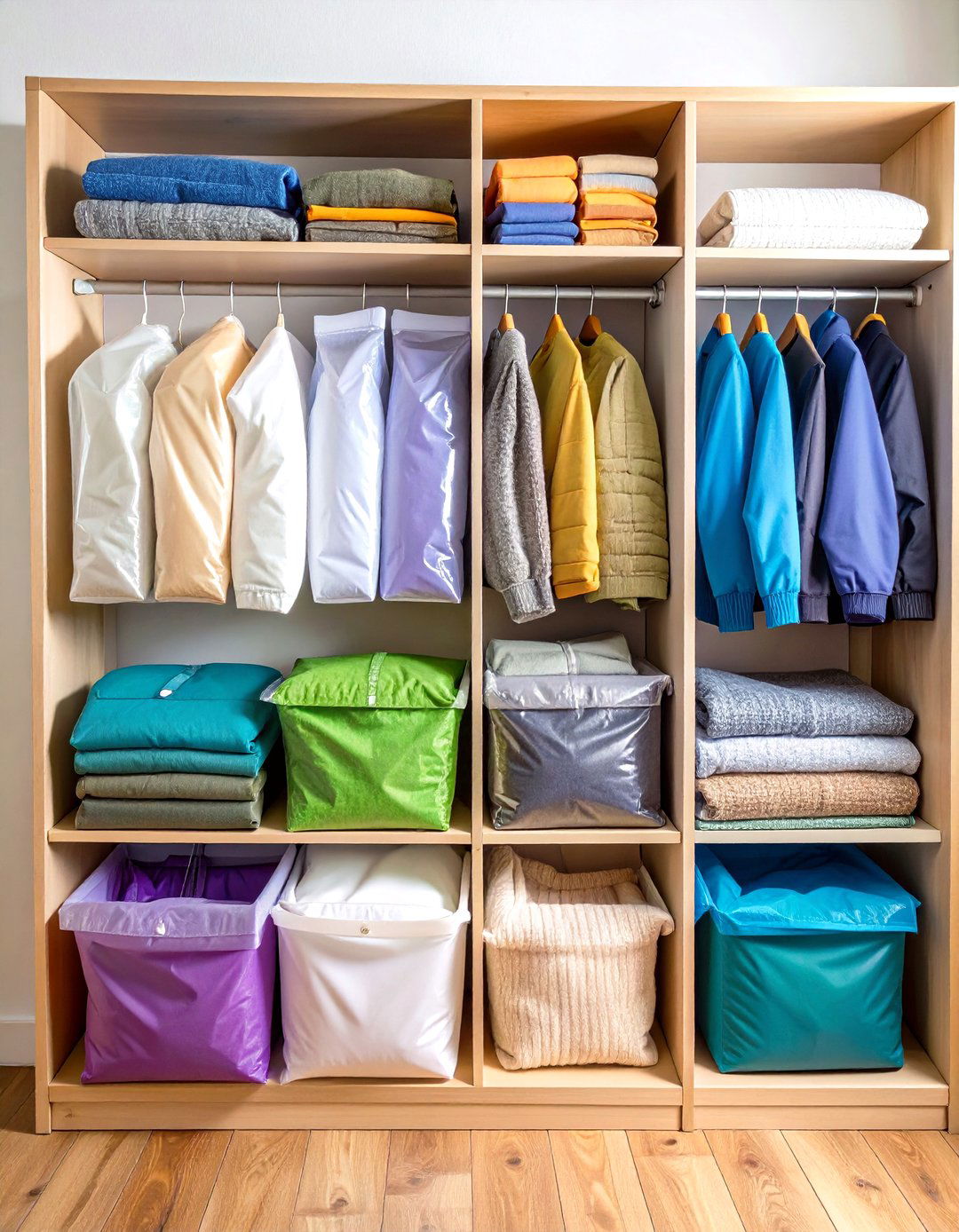
An upholstered bench at the foot of the bed doubles as a cedar-lined sweater vault. Interior hinges hold the lid open while you sort, and a breathable cotton lining wicks away any trapped humidity. Group knits by weight in fabric bins inside the ottoman, and label lids with removable chalk stickers for quick grabs.
14. Wall-Mounted Peg Rail and Knit Loops
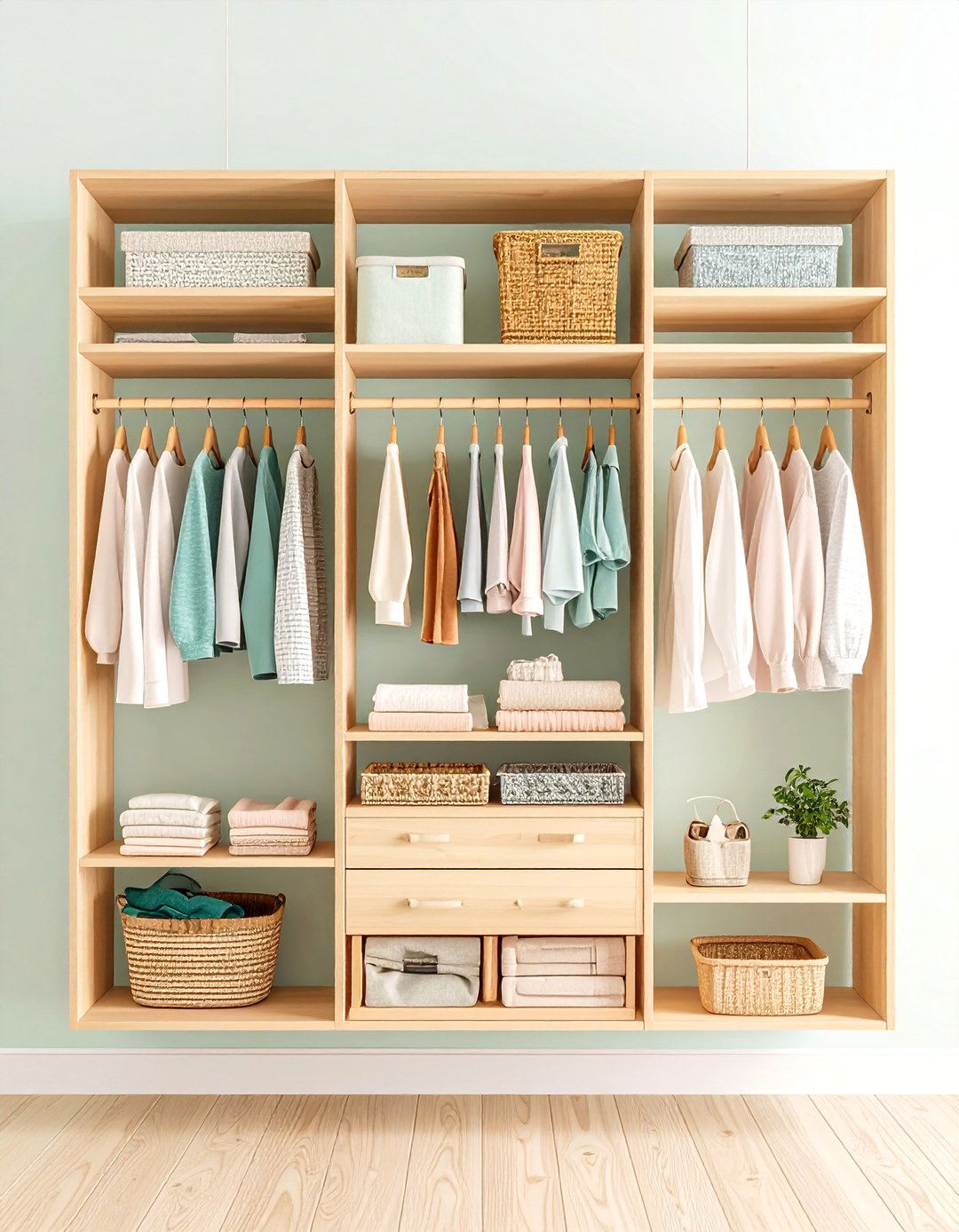
A Shaker-style peg rail fitted above a dresser lets you loop folded sweaters over padded sash loops—great for decorative Fair Isle pieces you want on display. Keep a maximum of five knits to avoid crowding and rotate weekly to prevent dust. The rail’s slim profile suits small apartments, and a quick wipe keeps wood dust-free.
15. Clear Shelf Dividers Vertical Piles
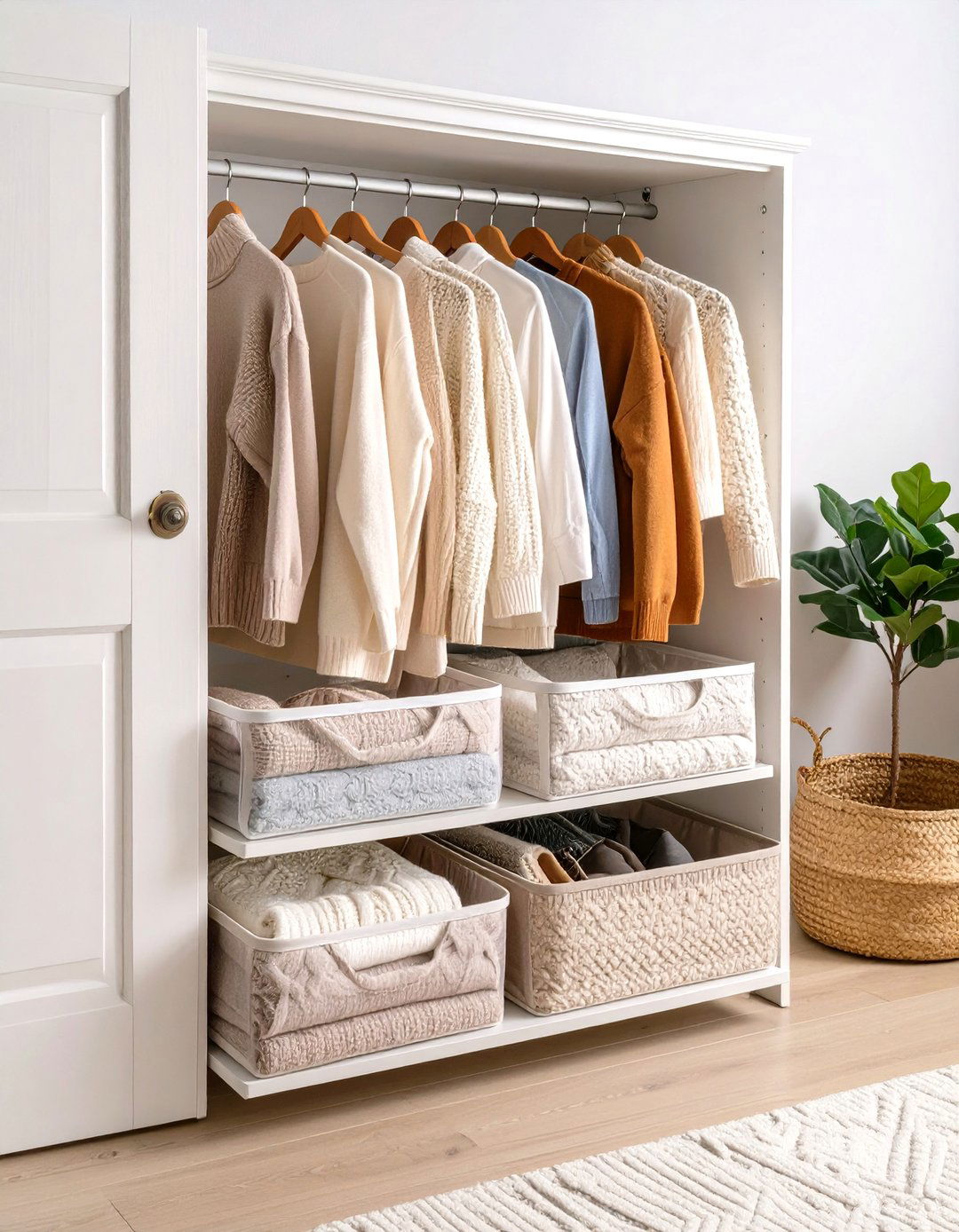
Acrylic shelf dividers slot onto existing boards, turning a long shelf into tidy “lanes” where vertical sweater stacks won’t sprawl. Organize by fiber—cotton, wool, blends—and slip a moisture-absorbing silica packet at the back of each lane. Because dividers are transparent, the closet still feels open and bright while every pile stays in its lane.
16. Labeled Zipper Pouches Inside Wardrobe
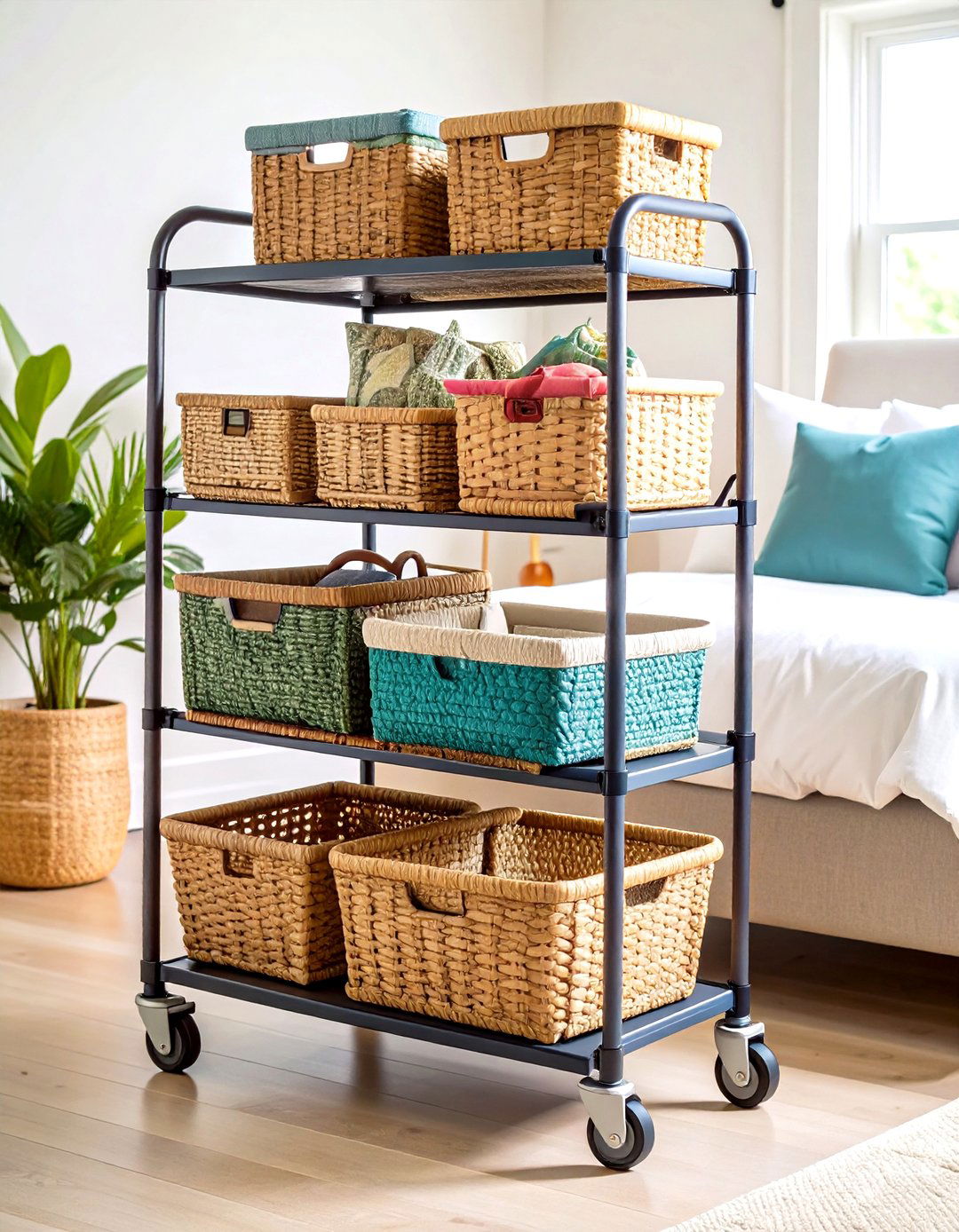
Breathable cotton zipper bags corral special-occasion or embellished knits. Print large labels (“holiday sparkles”) and affix to pouch fronts so you identify contents without unzipping. Store pouches on a high shelf to free prime real estate, and refresh lavender sachets inside twice a year. The soft fabric prevents snagging on sequins while shielding against dust.
17. Breathable Garment Bags for Premium Cashmere
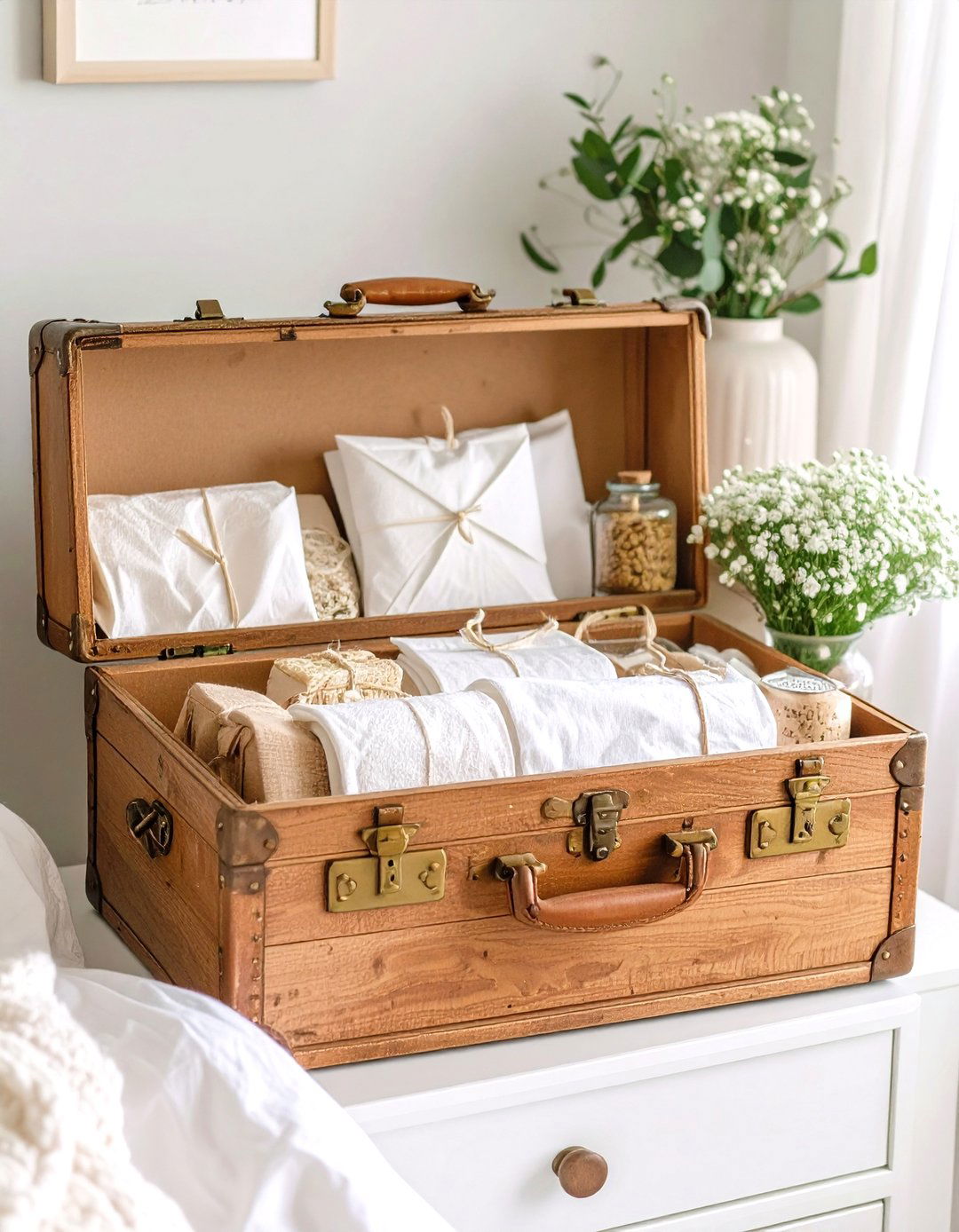
Slide luxe cashmere into thick cotton garment bags infused with cedar inserts; the fabric breathes while blocking light and moths. Choose versions with a 6 cm gusset so folds lie flat without creasing, and hang on wide wooden suit hangers to disperse weight. Inspect every quarter for pilling or pests, and launder before long-term storage.
Short on closet space? Convert a shallow IKEA-style cabinet with glass doors into a “sweater library.” Adjustable shelves let you align folds by height, and dust stays out while colors stay visible. Add strip lighting along the door frame for boutique vibes, and use drop-front bins on lower shelves for delicate alpaca blends.
19. Corner Ladder Shelf Knit Library
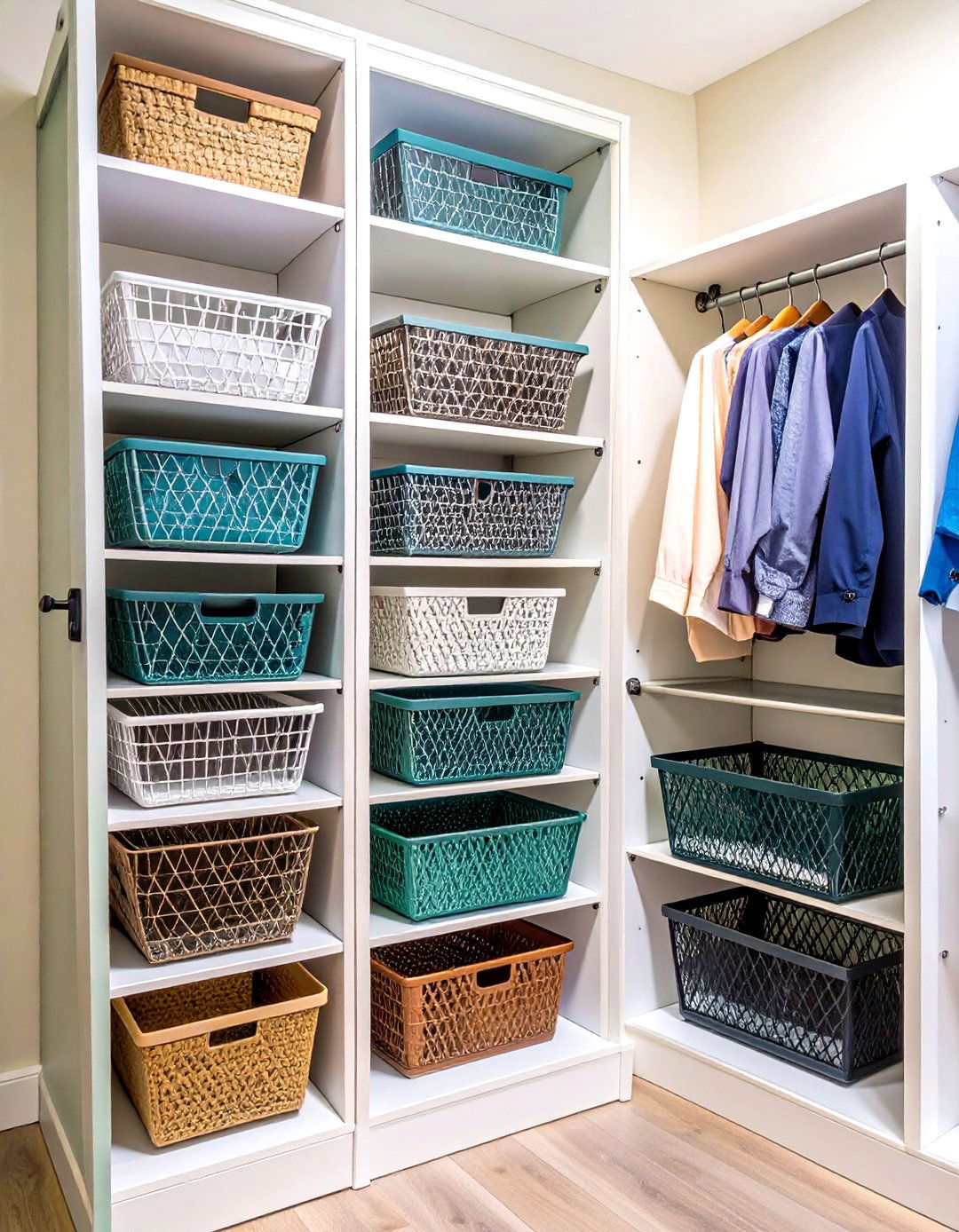
A leaning ladder shelf tucks into dead corners, turning them into vertical sweater real estate. Place heavy cable knits on the wide bottom step, graduating to fine cotton blends near the top. The open sides breathe, while the tiered design keeps each fold in view. Anchor the shelf to studs for safety and slip felt pads under legs to protect floors.
Clear, drop-front acrylic boxes protect designer knits from dust yet open effortlessly without un-stacking. Because sides are rigid, piles never collapse, and you can label the hidden base with fiber content for easy care-day sorting. Magnetic closures keep lids tight but one-hand operation simple on hectic mornings.
Conclusion:
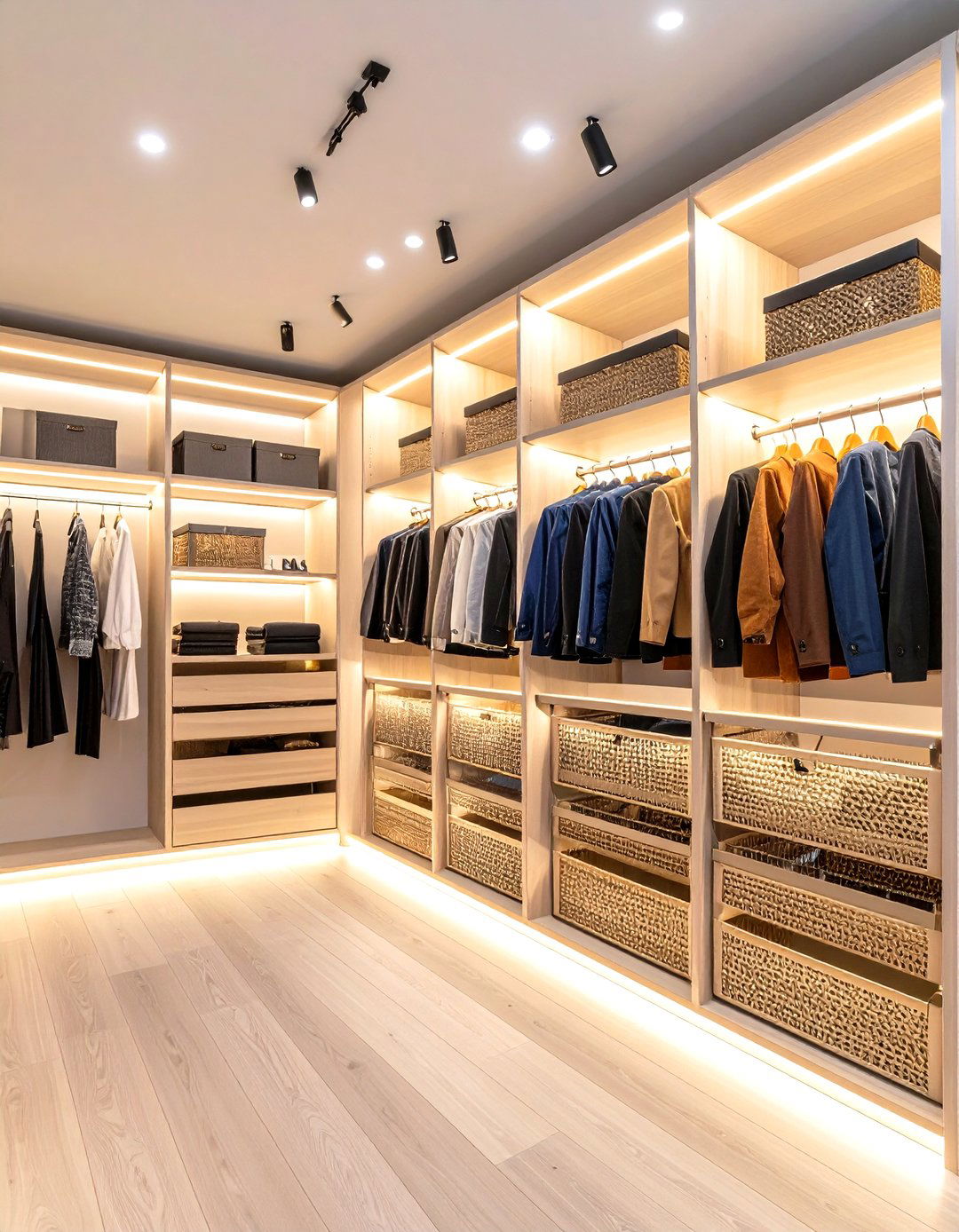
By mixing breathable materials, smart folding, pest-repelling cedar, and tailored containers, you’ll get a system that shields every sweater while showing off your style. Choose the themes that match your space and lifestyle, refresh sachets each season, and commit to quick weekly tidies—your knits will look and feel brand-new for years.


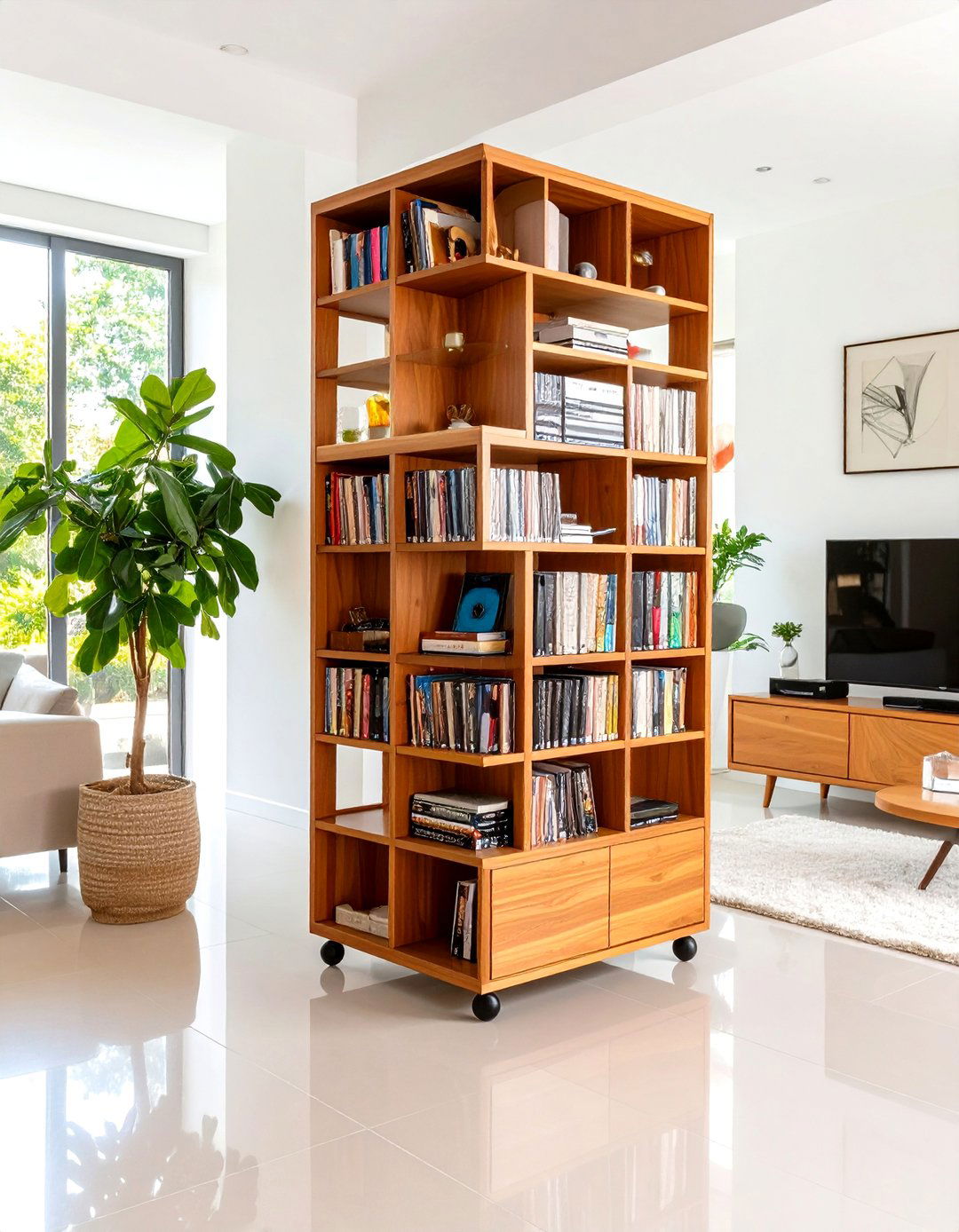
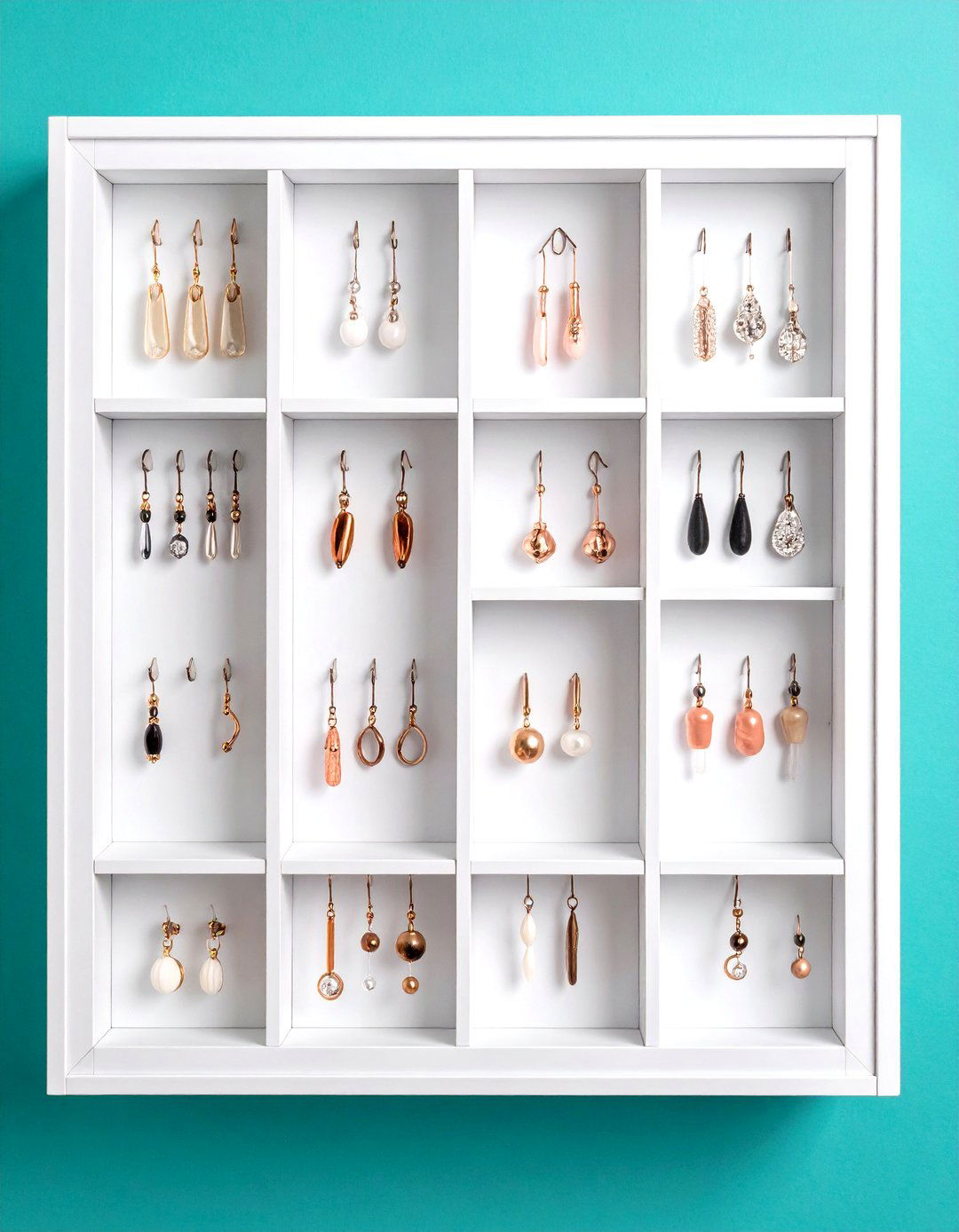
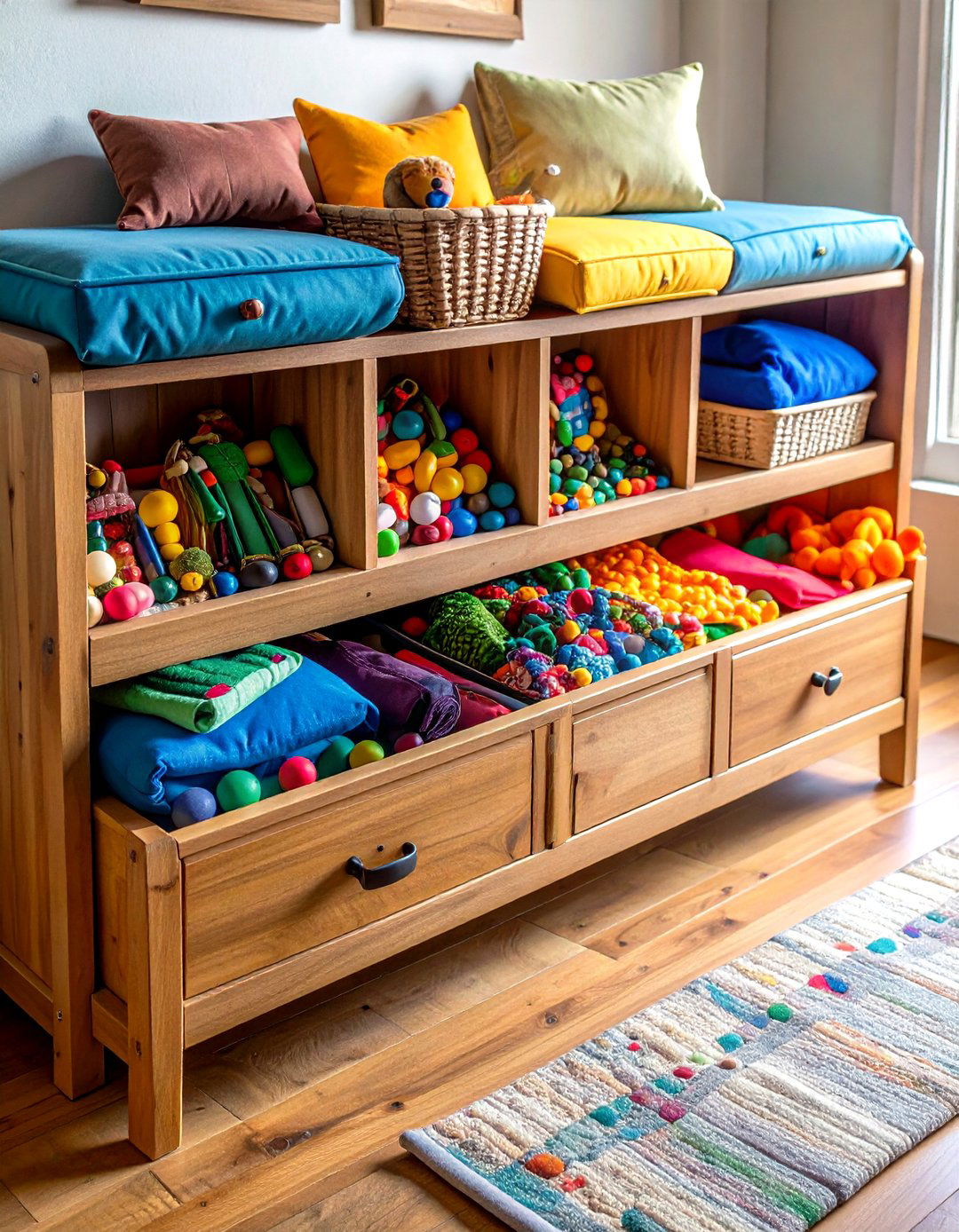
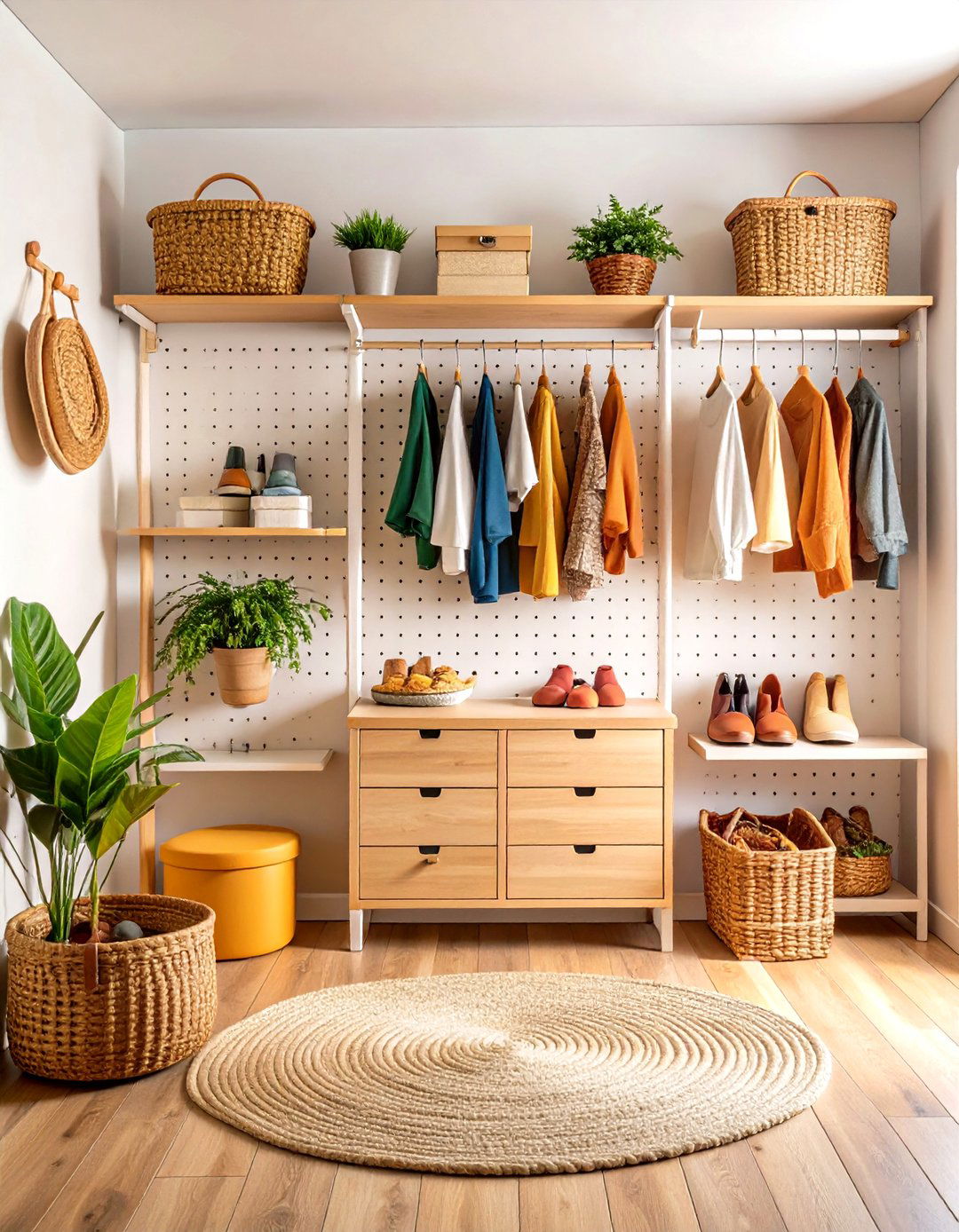

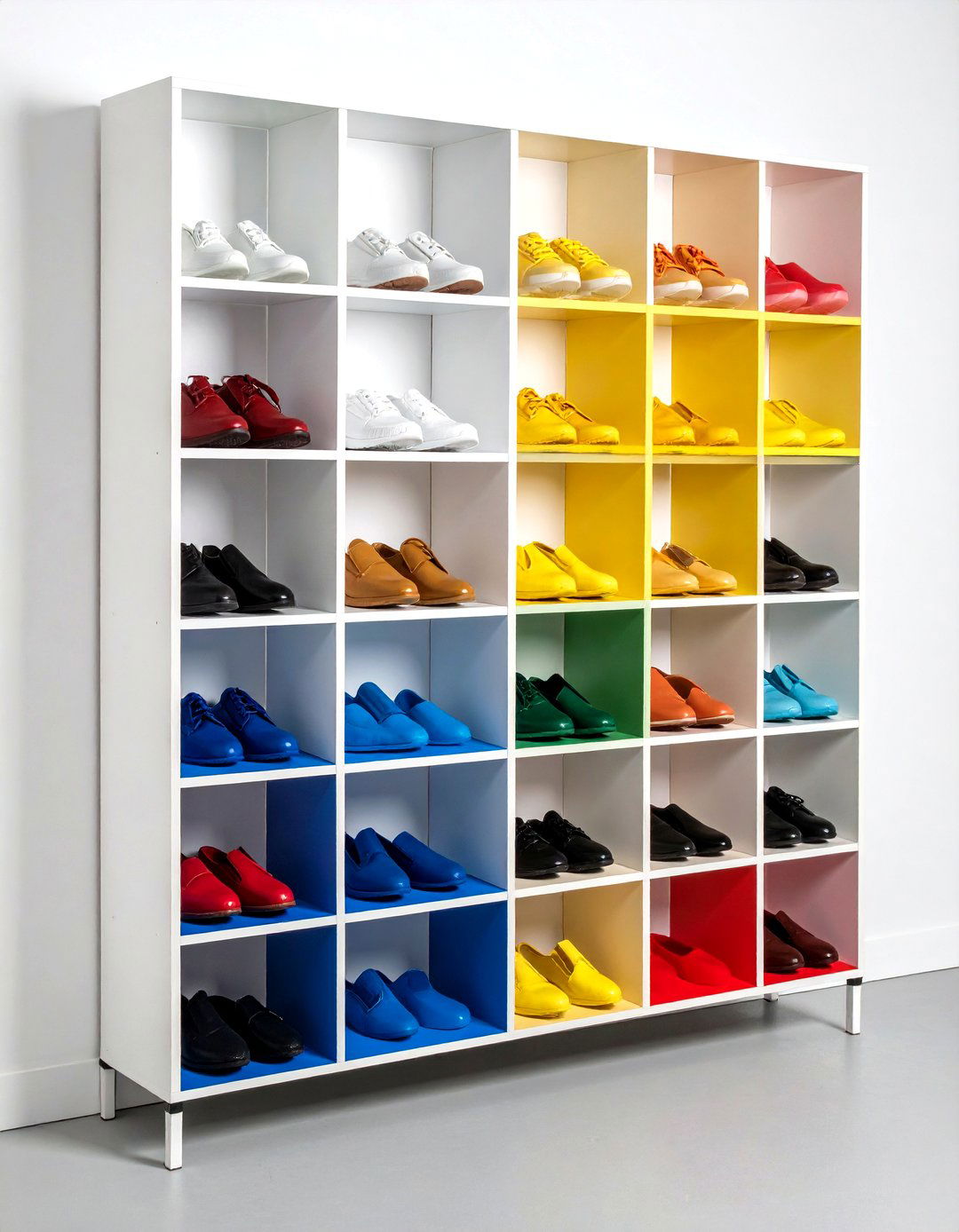
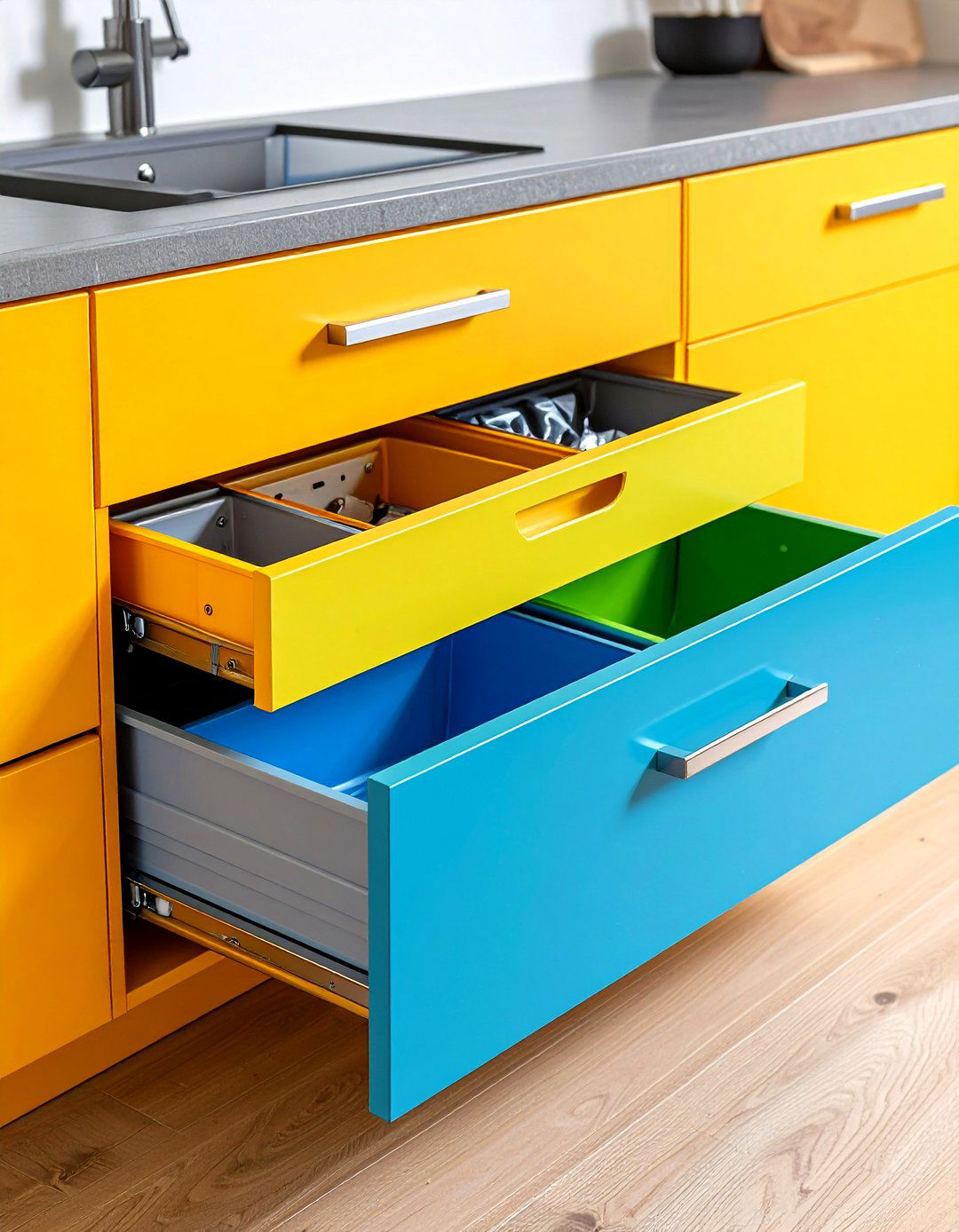
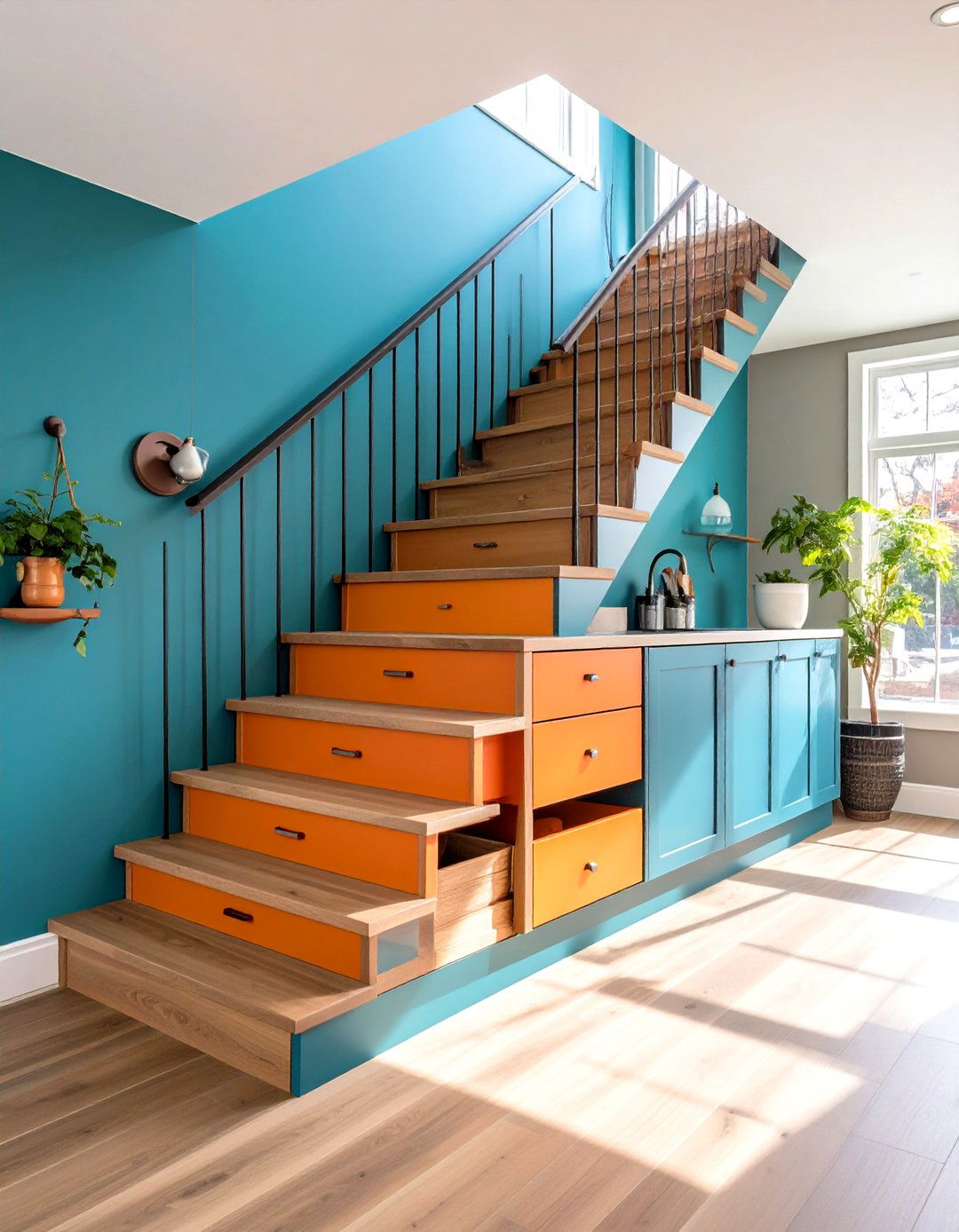
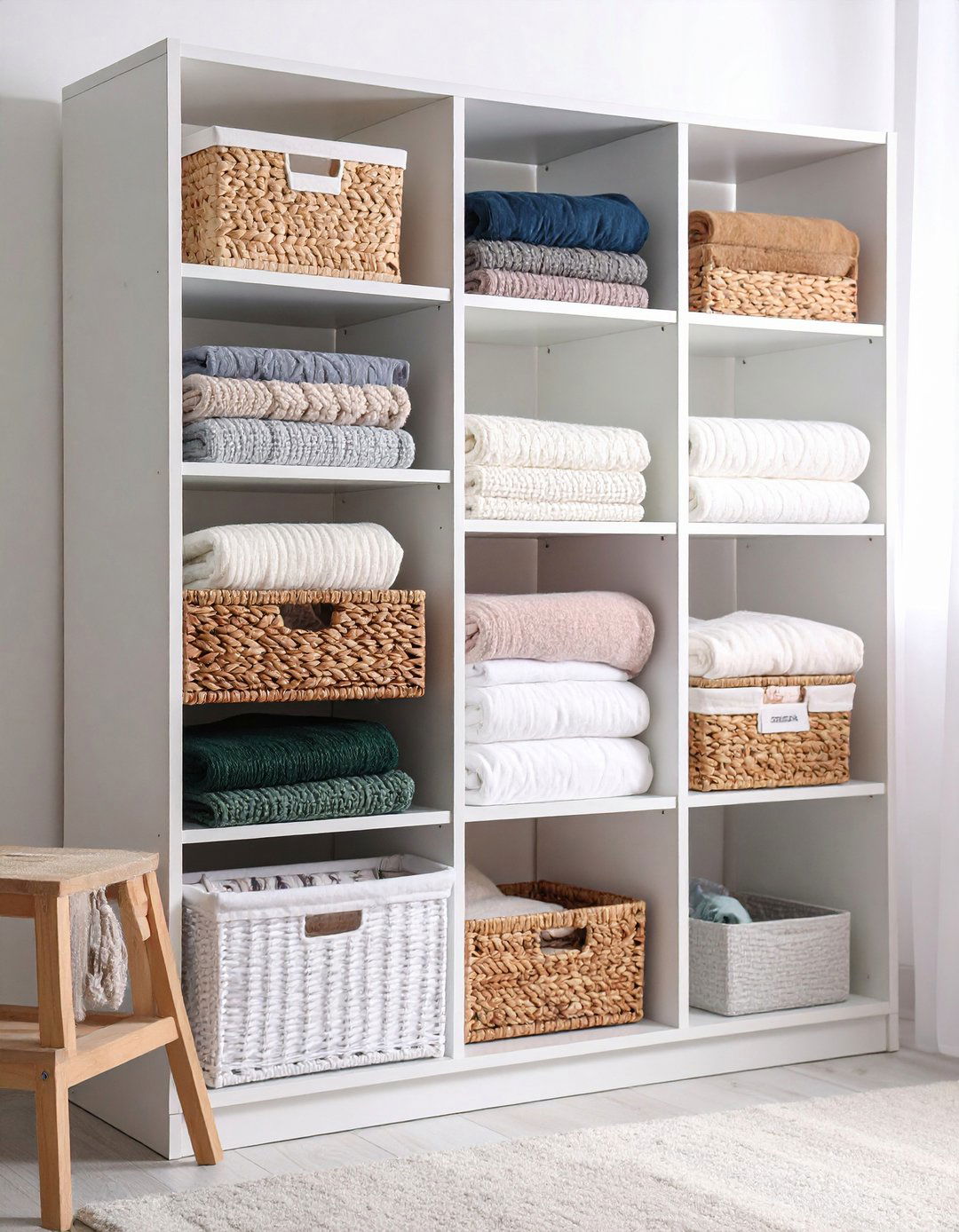
Leave a Reply